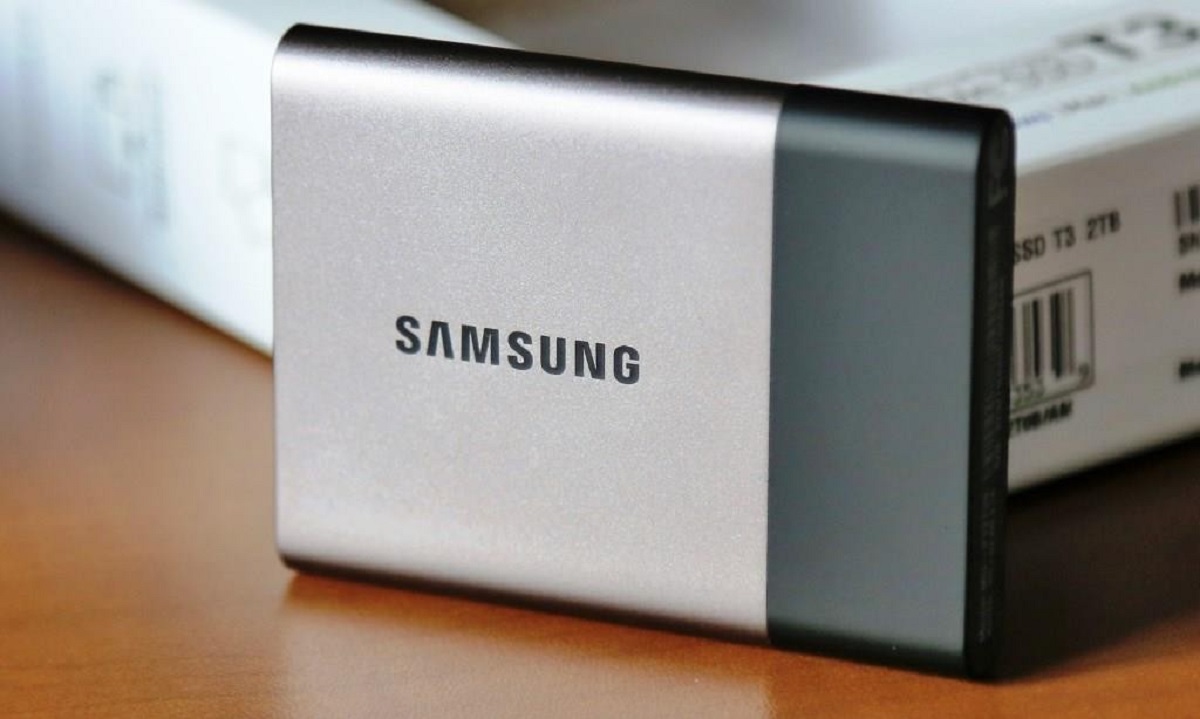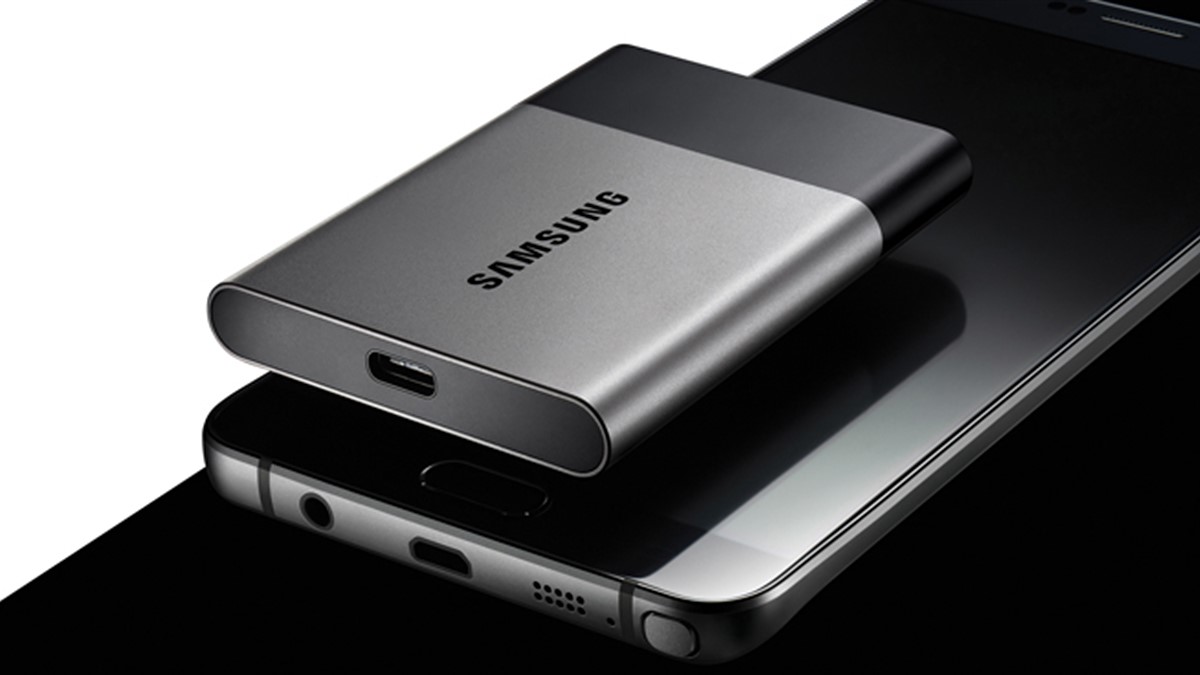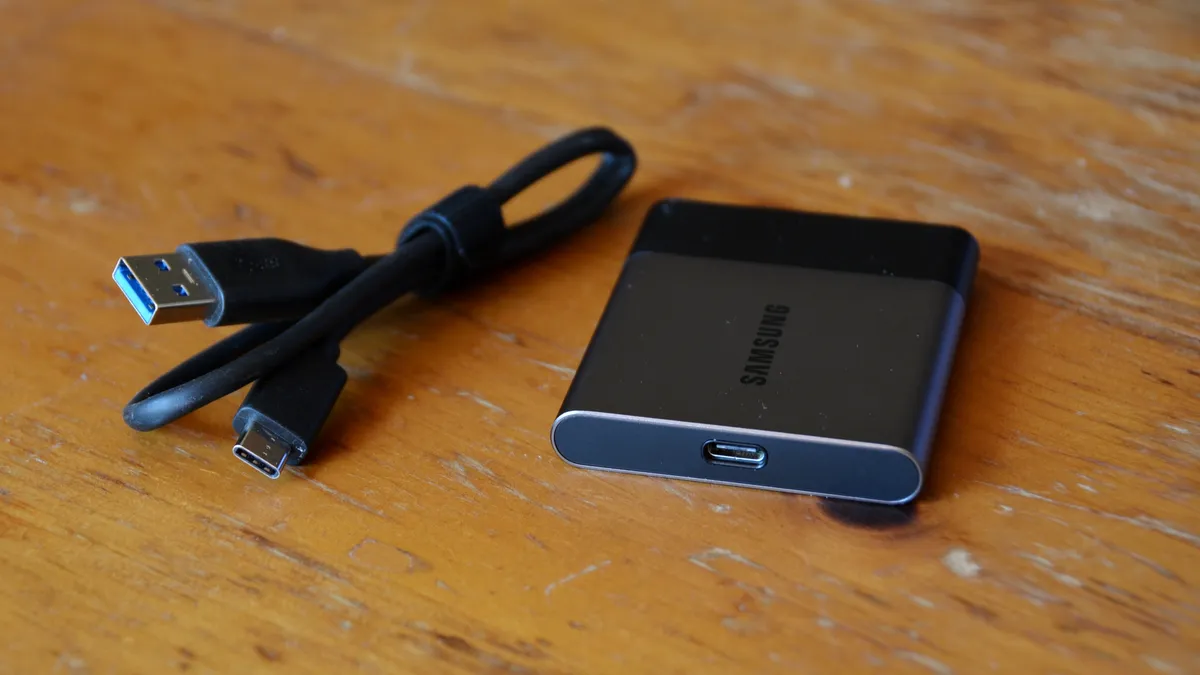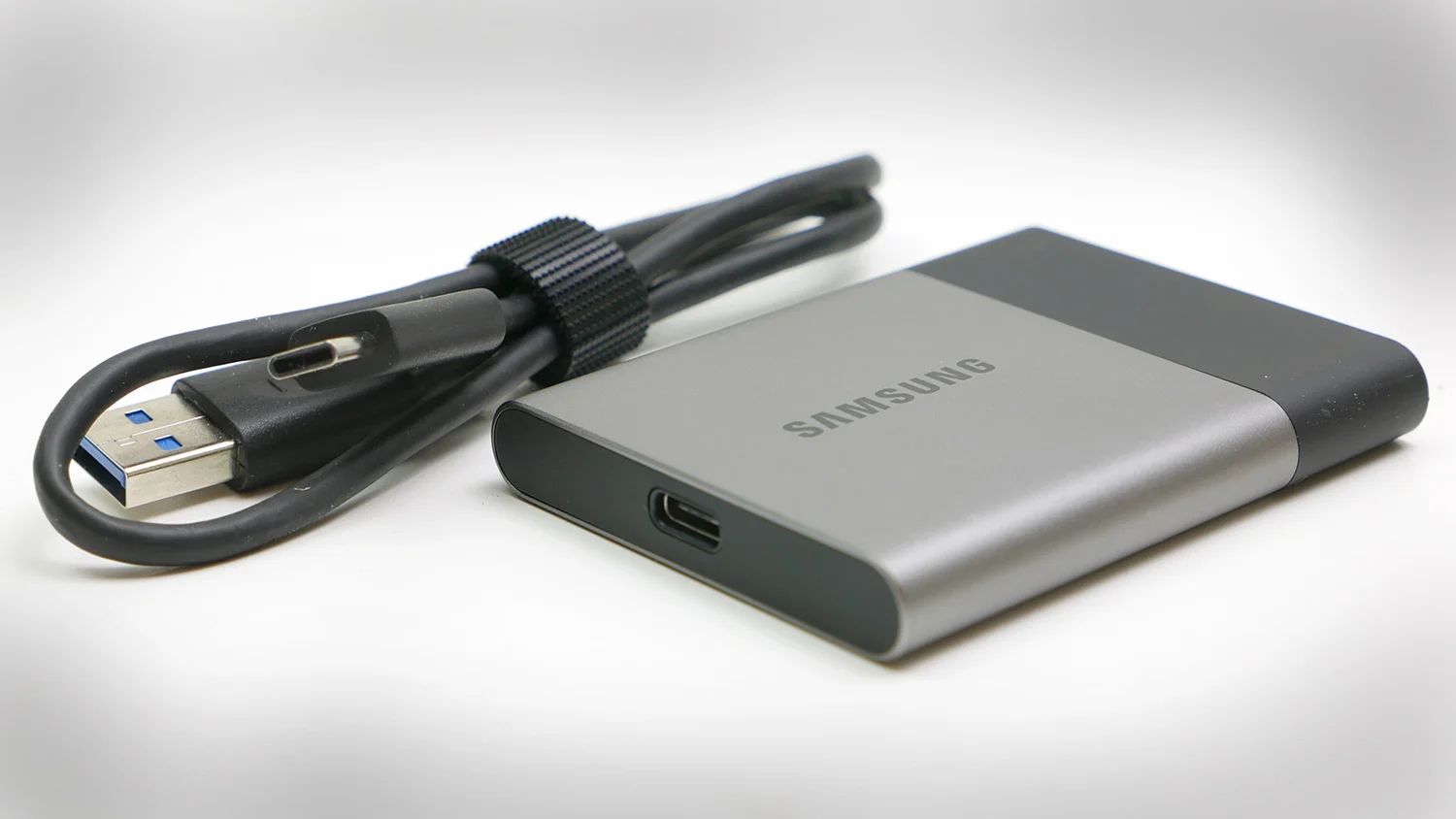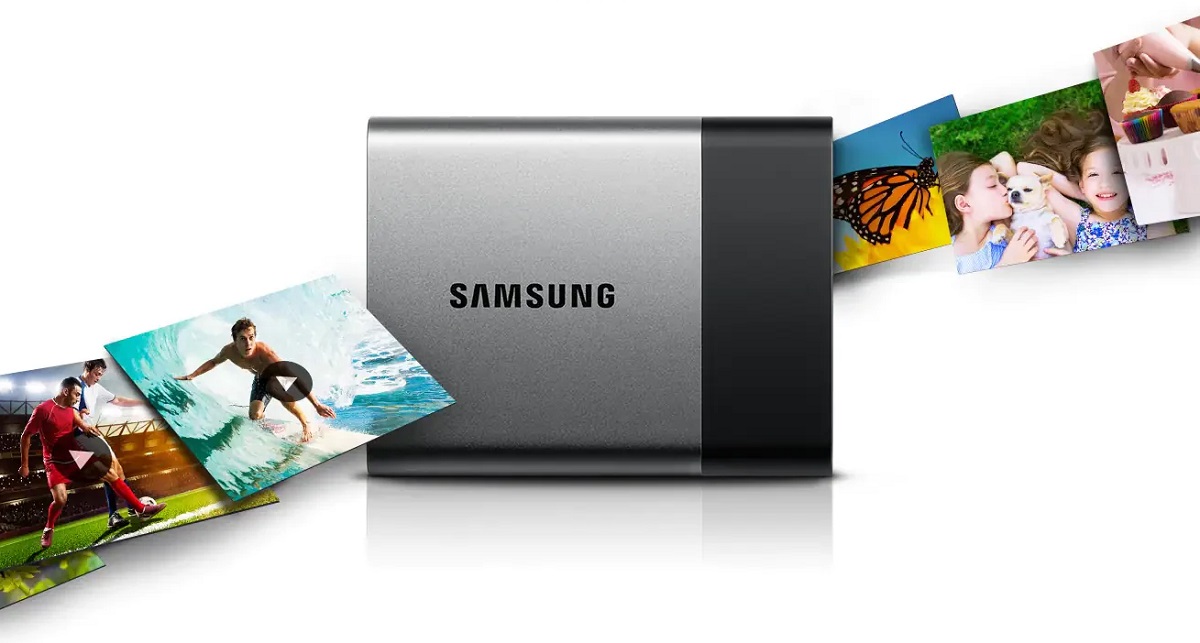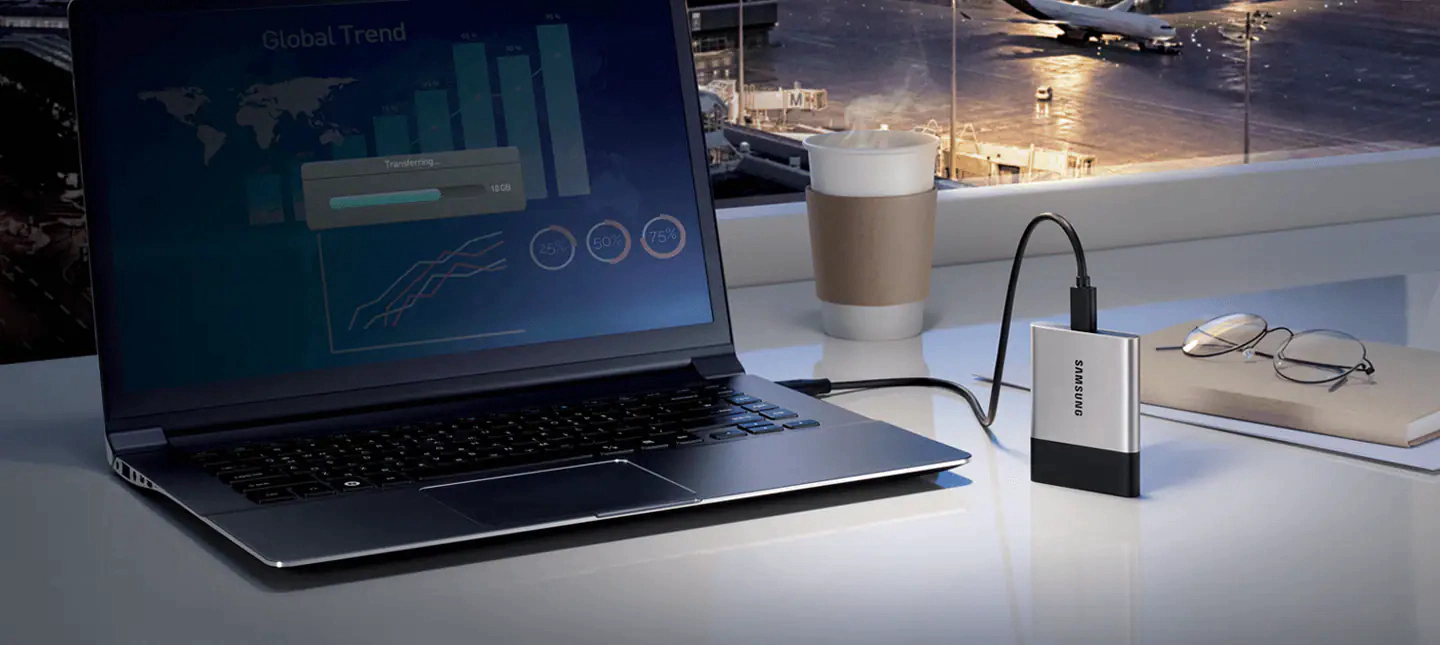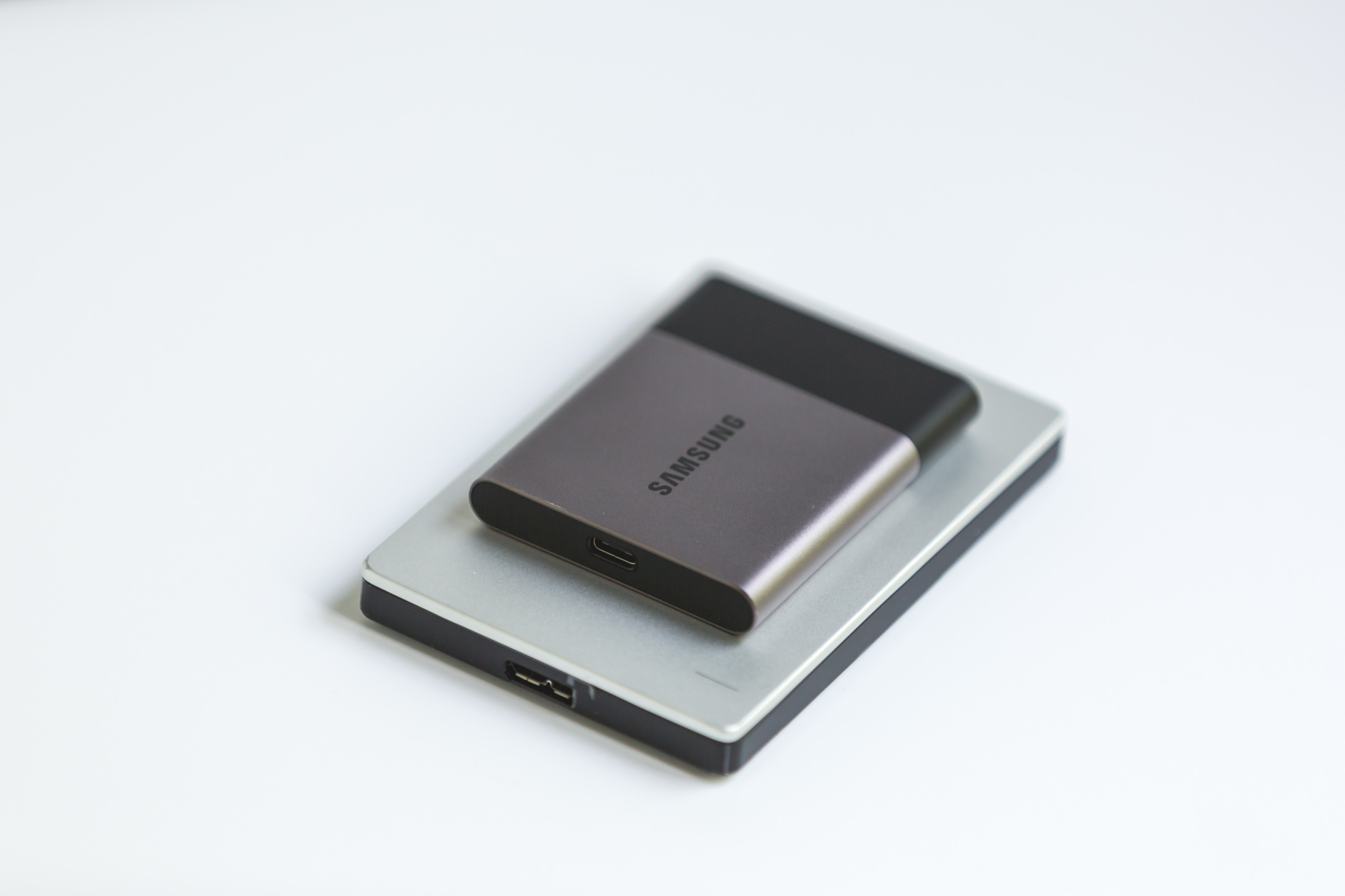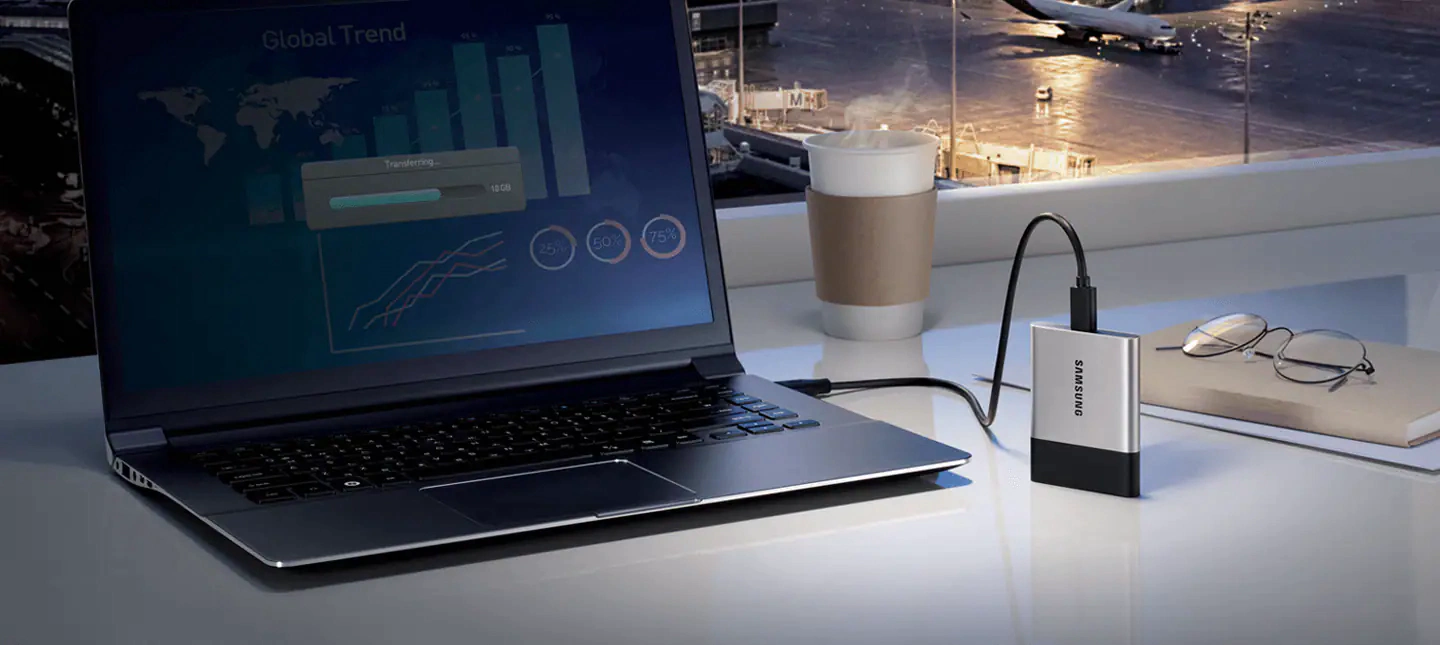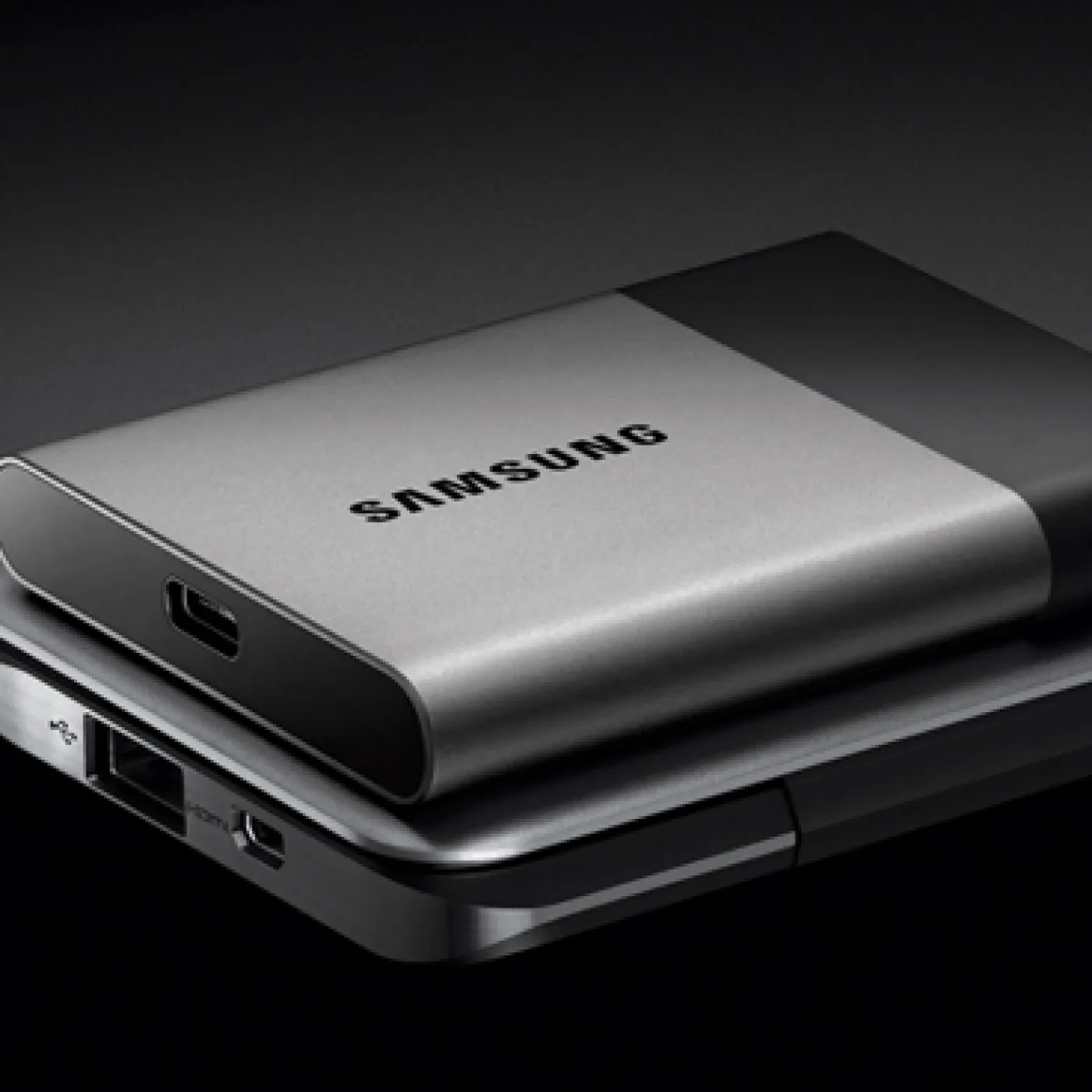Introduction
The Samsung T3 Portable SSD is a compact and reliable storage device that offers fast and convenient data transfer. However, like any electronic device, it is possible for the Samsung T3 Portable SSD to experience faults or issues over time. Identifying whether your Samsung T3 Portable SSD is faulty is crucial in order to take the necessary steps for repair or replacement.
This article will guide you on how to determine if your Samsung T3 Portable SSD is faulty. We will discuss common symptoms that indicate a potential problem with the device, as well as methods to effectively diagnose and troubleshoot the issue.
It’s important to note that the troubleshooting steps provided in this article are intended for general guidance. If you are unsure or uncomfortable performing any of these steps, it is recommended to seek professional assistance or contact Samsung support for further guidance.
Now, let’s proceed to understand the common symptoms of a faulty Samsung T3 Portable SSD and the methods to identify and resolve the issues.
Symptoms of a Faulty Samsung T3 Portable SSD
A faulty Samsung T3 Portable SSD may exhibit various symptoms that indicate a potential problem with the device. Recognizing these symptoms is the first step in identifying whether your SSD is experiencing issues. Here are some common symptoms to look out for:
- Not recognized by the computer: One of the most obvious indications of a faulty SSD is when it is not recognized or detected by the computer. If you plug in your Samsung T3 Portable SSD, but it does not appear in File Explorer or Disk Management, there may be an issue with the device.
- Slow data transfer: If you notice a significant decrease in the speed of data transfer between your Samsung T3 Portable SSD and the computer, it could be an indication of a potential fault. A sudden drop in transfer speeds, or consistent slow transfer rates, may point to a problem with the SSD.
- Frequent disconnections: Another sign of a faulty Samsung T3 Portable SSD is frequent disconnections during file transfers or while using the device. If your SSD keeps disconnecting and reconnecting without any apparent reason, it could be a symptom of an underlying issue.
- File system errors: When using the Samsung T3 Portable SSD, if you encounter repeated file system errors, such as corrupted files or folders, it is possible that the SSD has developed a fault. These errors can occur when the SSD is unable to read or write data correctly.
- Strange noises or vibrations: Unusual noises or vibrations emanating from the Samsung T3 Portable SSD are not typical and may indicate a hardware problem. If you hear grinding, clicking, or buzzing sounds, or feel excessive vibrations when the SSD is in use, it’s essential to investigate further.
If you are experiencing any of these symptoms with your Samsung T3 Portable SSD, it is advisable to proceed with the following methods for diagnosing and troubleshooting the issue. By identifying the cause of the problem, you can take the necessary steps to resolve it and ensure the smooth functioning of your SSD.
Method 1: Run Diagnosis on the T3 Portable SSD
Running a diagnostic test on your Samsung T3 Portable SSD can help determine if there are any issues with the device. To perform the diagnosis, follow these steps:
- Connect the T3 SSD: Connect your Samsung T3 Portable SSD to your computer using the USB cable provided.
- Access the Samsung Portable SSD Software: Download and install the Samsung Portable SSD Software, which is available on the Samsung website. Open the software once installed.
- Select your T3 SSD: From the list of detected SSDs, select your Samsung T3 Portable SSD. If the software does not detect the SSD, try connecting it to a different USB port on your computer.
- Initiate the diagnosis: Within the Samsung Portable SSD Software, look for an option to run a diagnostic test. This may vary depending on the version of the software, but it is typically labeled as “Diagnose” or “Check SSD.”
- Follow the on-screen instructions: Once you initiate the diagnostic test, follow the on-screen instructions provided by the software. The test will analyze the SSD for any errors or issues and provide a report on its findings.
- Review the diagnostic report: After the test is complete, review the diagnostic report. It will indicate if any problems were detected with your Samsung T3 Portable SSD. If the report highlights any errors or issues, take note of the details for further troubleshooting or when contacting technical support.
Running a diagnostic test on your Samsung T3 Portable SSD can help identify potential hardware or software problems. If no issues are detected, it suggests that the problem may lie elsewhere, such as with the computer or the cable connecting the SSD. Proceed to the next method to further troubleshoot the possible causes of the problem.
Method 2: Check for Error Messages on Your Computer
When your Samsung T3 Portable SSD experiences issues, your computer may display error messages that provide valuable insights into the problem. Checking for error messages can help you identify the specific issue related to the SSD. Here’s how to proceed:
- Connect the T3 SSD: Ensure that your Samsung T3 Portable SSD is properly connected to your computer using the provided USB cable.
- Observe error messages: While using the SSD, pay attention to any error messages or notifications that appear on your computer screen. These messages may appear as pop-ups, system notifications, or within the application you are using.
- Note down the error details: Take note of the error message details, including any error codes or descriptions. This information can help you investigate and resolve the issue more effectively.
- Search for solutions: With the error message details in hand, conduct a search online using the error message and any relevant keywords. Look for support forums, official documentation, or articles that address the specific error you encountered.
- Follow recommended solutions: Based on your research, follow the recommended solutions provided for the specific error message. These solutions may involve updating drivers, adjusting settings, or performing specific troubleshooting steps.
- Document the steps taken: As you attempt to resolve the issue, document the steps you’ve taken and whether they were successful or not. This documentation can be useful if you need to reach out to technical support or if you decide to pursue additional troubleshooting methods.
Checking for error messages on your computer can provide valuable clues about the underlying issue with your Samsung T3 Portable SSD. By understanding the specific error and following the recommended solutions, you can take the necessary steps to resolve the problem.
Method 3: Test the Samsung T3 on Different Computers
Testing your Samsung T3 Portable SSD on different computers can help determine whether the issue is specific to your computer system or if it’s related to the SSD itself. By connecting the SSD to multiple computers, you can isolate the problem and take appropriate action. Follow these steps to test the SSD on different computers:
- Prepare multiple computers: Gather at least two different computers to test your Samsung T3 Portable SSD. Ensure that these computers have compatible USB ports and operating systems.
- Connect the SSD: Connect the SSD to the first computer using the provided USB cable. Wait for it to be recognized by the computer.
- Check SSD detection: Once connected, verify if the Samsung T3 Portable SSD is detected by the computer. Look for it in File Explorer or Disk Management.
- Transfer files: Copy a few files or folders from the computer’s internal storage to the Samsung T3 Portable SSD. Monitor the transfer process to ensure it is smooth and without any interruptions.
- Disconnect and repeat: Safely disconnect the SSD from the first computer and connect it to the second computer. Repeat steps 3 and 4 to ensure the SSD is detected and file transfers occur smoothly.
- Observe and compare results: Pay attention to any differences in how the Samsung T3 Portable SSD performs on the different computers. Take note if any specific computer consistently exhibits issues while others do not, as this can help narrow down the cause of the problem.
Testing your Samsung T3 Portable SSD on different computers allows you to determine if the issue lies with the SSD itself or if it is related to your specific computer system. If the SSD functions properly on one computer but not on others, it suggests that the issue may be specific to your computer setup. In that case, you can focus on troubleshooting your computer or seeking assistance from technical support. If the SSD exhibits problems on multiple computers, it indicates a potential issue with the SSD, requiring further investigation or contacting Samsung support for assistance.
Method 4: Run a Check on the T3 Using Samsung Portable SSD Software
The Samsung Portable SSD Software provides a built-in feature to check the health and performance of your Samsung T3 Portable SSD. By running a check using this software, you can identify any potential issues with the SSD and take appropriate action. Follow these steps to run a check on the T3 using the Samsung Portable SSD Software:
- Ensure the software is installed: Download and install the Samsung Portable SSD Software from the official Samsung website, if you haven’t already done so.
- Connect your T3 SSD: Connect your Samsung T3 Portable SSD to your computer using the provided USB cable. Ensure that the SSD is properly connected and recognized by the computer.
- Launch the Samsung Portable SSD Software: Open the Samsung Portable SSD Software on your computer. It should automatically detect and display your connected Samsung T3 Portable SSD.
- Navigate to the Check SSD section: Look for an option within the software labeled “Check SSD” or something similar. Click on it to access the SSD check feature.
- Initiate the check: Within the Check SSD section, click on the “Start” or “Scan” button to initiate the check. The software will perform a comprehensive scan of the SSD to identify any potential issues.
- Review the check results: Once the check is complete, the Samsung Portable SSD Software will provide a report with the results. It will indicate if any errors or issues were detected in the SSD.
- Take appropriate action: Depending on the check results, you can take appropriate action to address the specific issue. This may involve performing recommended troubleshooting steps or seeking assistance from technical support.
Running a check on your Samsung T3 Portable SSD using the Samsung Portable SSD Software allows you to proactively identify any potential issues with the SSD. By addressing these issues promptly, you can ensure the optimal performance and longevity of your SSD.
Method 5: Update the Firmware of the Samsung T3 Portable SSD
Updating the firmware of your Samsung T3 Portable SSD can often resolve compatibility issues and improve overall performance. Firmware updates provide bug fixes, enhancements, and sometimes even new features. Follow these steps to update the firmware of your Samsung T3 Portable SSD:
- Check for firmware updates: Visit the official Samsung website and search for the support page specifically for the Samsung T3 Portable SSD. Look for any available firmware updates for your specific model.
- Download the firmware update: If a firmware update is available, download it to your computer. Follow the instructions provided on the website to ensure you download the correct firmware for your SSD model.
- Connect your T3 SSD: Connect your Samsung T3 Portable SSD to your computer using the provided USB cable. Ensure that the SSD is properly connected and recognized by the computer.
- Run the firmware update tool: Open the firmware update tool that you downloaded from the Samsung website. Follow the on-screen instructions to run the tool and begin the firmware update process.
- Follow the firmware update process: The firmware update tool will guide you through the process. Read the instructions carefully and proceed accordingly. It is crucial not to interrupt or disconnect the SSD during the firmware update process.
- Wait for the update to complete: Allow the firmware update process to complete. This may take several minutes, depending on the size of the update and the speed of your computer.
- Verify the firmware version: After the update is complete, verify the firmware version of your Samsung T3 Portable SSD. This can usually be done through the Samsung Portable SSD Software or by checking the device’s properties in your computer’s settings.
- Test the SSD: Test the Samsung T3 Portable SSD to ensure it is functioning correctly after the firmware update. Carry out tasks such as file transfers, opening files, or using the SSD as intended to ensure everything is working as expected.
Updating the firmware of your Samsung T3 Portable SSD can help you address any compatibility issues and potentially improve performance. Firmware updates are crucial for maintaining the reliability and functionality of your SSD, so it’s recommended to regularly check for and install the latest updates available.
Method 6: Contact Samsung Support for Assistance
If you have tried the previous methods and are still experiencing issues with your Samsung T3 Portable SSD, it may be time to reach out to Samsung support for further assistance. Samsung’s customer support team is well-equipped to provide guidance and solutions for SSD-related problems. Here’s how you can contact Samsung support:
- Visit the Samsung support website: Go to the official Samsung support website and navigate to the support section specifically for the Samsung T3 Portable SSD.
- Find the contact information: Look for the contact information provided on the support page. This may include phone numbers, email addresses, or live chat options.
- Choose the preferred contact method: Select the contact method that is most convenient for you. Phone or live chat support can provide immediate assistance, while email support allows you to describe the issue in detail.
- Prepare necessary information: Before contacting Samsung support, gather relevant information about your SSD, such as the model number, firmware version, and a description of the problem you are experiencing. This will help streamline the troubleshooting process.
- Reach out to Samsung support: Initiate contact with Samsung support using the provided contact information. Clearly explain the issue you are facing, including any troubleshooting steps you have already attempted.
- Follow support guidance: Samsung’s customer support team will provide you with instructions and guidance based on the information you provide. Follow their instructions carefully, as they have the expertise to assist you in resolving the problem.
- Provide feedback and document: After receiving assistance from Samsung support, provide feedback about the support experience. Document the troubleshooting steps recommended by the support team and note any changes or improvements observed.
By contacting Samsung support, you will have access to expert guidance and assistance in resolving any persistent issues with your Samsung T3 Portable SSD. They can help diagnose complex problems, offer additional troubleshooting steps, or facilitate a warranty claim if necessary.
Conclusion
In this article, we have explored various methods to determine if your Samsung T3 Portable SSD is faulty. By recognizing common symptoms, running diagnostics, checking for error messages, testing on different computers, utilizing Samsung’s Portable SSD Software, and updating the firmware, you can effectively troubleshoot and identify potential issues with your SSD.
If you encounter persistent problems or are unable to resolve the issue on your own, it is important to reach out to Samsung support. They have the expertise and resources to provide further assistance and guide you through the troubleshooting process.
Remember, these methods are intended as general guidance and troubleshooting steps. If you are unsure or uncomfortable performing any of these methods, it is recommended to seek professional assistance or contact Samsung support for further guidance.
Regular maintenance, including firmware updates and data backups, can help prevent issues with your Samsung T3 Portable SSD in the future. Additionally, following proper handling and storage procedures can prolong the lifespan and ensure the optimal performance of your SSD.
By actively diagnosing and troubleshooting any faults or issues with your Samsung T3 Portable SSD, you can ensure smooth data transfers, reliable performance, and peace of mind knowing that your valuable data is securely stored.







